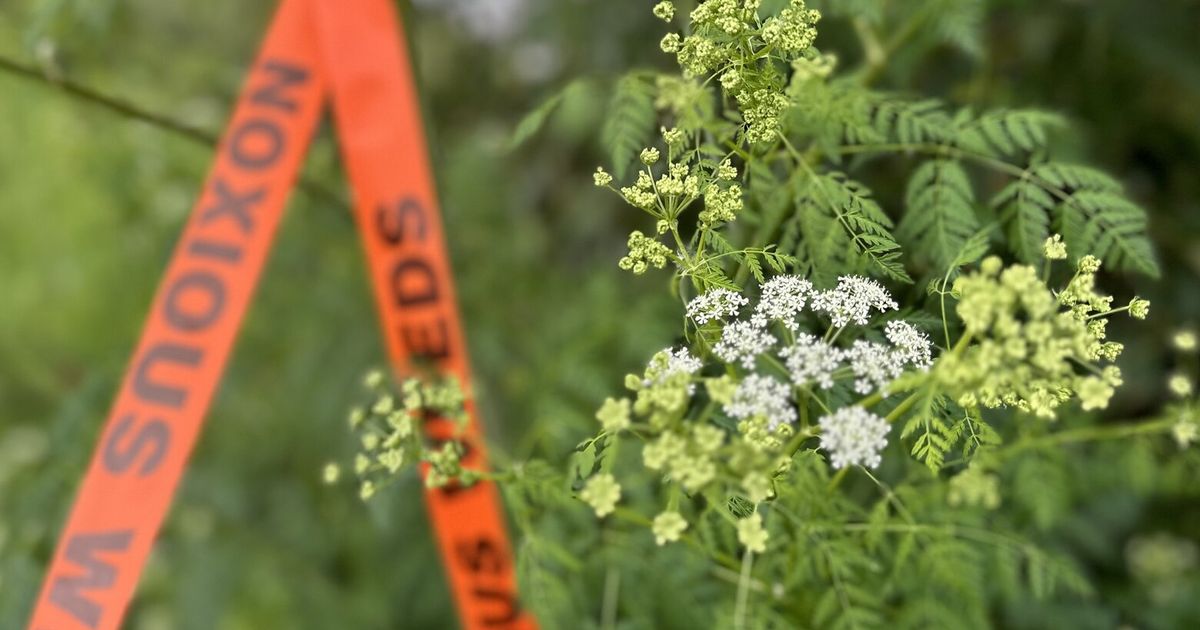King County warns of spread of toxic weed poison hemlock
Beware of the poison hemlock, an invasive weed so toxic it can be lethal, King County officials say. Poison hemlock (Conium maculatum) has the ability to spread rapidly and often resembles other edible plants. But eating just a few of... King County, Washington state, has issued a warning about the spread of the toxic weed poison hemlock (Conium maculatum), an invasive weed that can be lethal. The plant, which spreads rapidly and resembles other edible plants, has been found at 566 sites across the country. The most serious effect of poisoning is respiratory failure, with lower-level symptoms including nausea, vomiting, pupil dilation and muscle tremors. The maximum risk of poisoning comes from eating the plant. To report an infestation, contact the agency managing the property and sending photos with an exact location.

公開済み : 1年前 沿って Paulo Villalobos Saborío の Environment
Beware of the poison hemlock, an invasive weed so toxic it can be lethal, King County officials say.
Poison hemlock (Conium maculatum) has the ability to spread rapidly and often resembles other edible plants. But eating just a few of its leaves can kill.
The plant is causing concern in the region, said Skye Pelliccia, a specialist in noxious weeds for King County.
Although poison hemlock arrived in the Pacific Northwest more than 100 years ago, it was not until 2019 that King County began to track it. So far the county has found the plant at 566 sites, such as parks, schools, community gardens, pastures and rights of way.
Rahel Stampfer, a county spokesperson, said “poison hemlock has spread along roads and railroad tracks for many years and has been present in parks for decades.”
It belongs to the carrot family and therefore resembles carrots, parsley and fennel. It mainly grows in disturbed soils, such as road margins, but also in backyards.
This noxious weed reproduces exclusively by seeds and each plant has the ability to produce 40,000 seeds.
It differs from other plants mainly by its stem, as poison hemlock stem is hairless, smooth and with red to purple spots and streaks. Another way to distinguish it is its size, as it can grow between 6 and 10 feet tall, compared to the average 3 to 4 feet tall of other carrots.
Poison hemlock also can be distinguished by its flower clusters that look like white umbrellas.
To report an infestation of the plant, you can contact the agency that manages the property and send it photographs with an exact location.
If the discovery is made on private property, check with the owner, as they may not be aware of the plant.
Poison hemlock is toxic in all its parts. It can cause problems in people, animals and insects.
“The plant itself, just like eating six to eight leaves, could kill you,” Pelliccia said. “Which is pretty severe as far as toxic plants go, but even just being around it and eating any part of it can still at least like give you some level of poisoning. So even if you just have one leaf, you could still have symptoms of poisoning.”
The most serious effect of poisoning is respiratory failure. Lower-level symptoms include nausea, vomiting, pupil dilation and muscle tremors. In case of symptoms, rest and drink plenty of water. Any difficulty breathing requires emergency aid.
Contact is not risky unless you break the plant, touch the sap, get it under your nails, and then scratch yourself or put your hands in your mouth. The greatest risk comes from eating it. There have also been reports of effects among people who burn or mow the plant.
To safely remove the plants, Pelliccia advises using protective clothes — including gloves, sleeves, pants and a mask — and digging to loosen the plant from the root. Depending on the size of the plant, the flowers can be cut first. Once finished, all skin exposed to contact should be washed with soap and water.
Place the plant in plastic bags and dispose of it in the garbage. Never put it in the compost.
